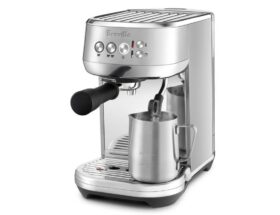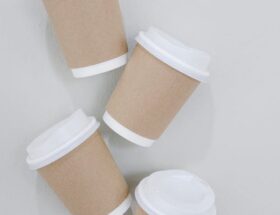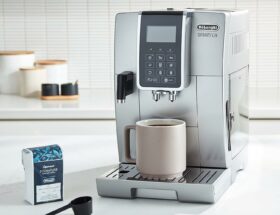
How to make Swedish Fika Coffee: Scandinavia’s Caffeine!
Welcome, coffee lovers and aficionados! In the unique and cold realms of Scandinavia, lies a coffee culture that is as robust and rich as the drink they so adore. It’s none other than the Swedish tradition of Fika; a practice that goes beyond a mere coffee break and touches the culture’s social fabric. Ready to embark on a delightful journey through the intriguing world of Swedish coffee culture? Let’s brew this journey together!
Table of Contents
- Essential Equipment for Embracing the Swedish Fika Coffee Culture
- Step-by-step Guide: Brewing Your Own Swedish Fika Coffee
- Frequently Asked Questions
- 1. What is Swedish Fika?
- 2. How is coffee consumed in Scandinavia?
- 3. What kind of coffee is popular in Sweden?
- 4. What treats are traditionally served with Swedish Fika?
- 5. How can I incorporate Swedish Fika into my daily routine?
- 6. Is Swedish coffee culture unique?
- 7. What’s the history behind Swedish Fika?
- 8. Can I experience Swedish Fika outside of Sweden?
- 9. What is the role of Fika in Swedish workplaces?
- 10. Does Fika have to involve coffee?
- Reflecting Over a Cup
Did You Know?
Here’s an interesting cup of knowledge for you! The word ‘Fika’ doesn’t just mean a coffee break in Sweden. It is a phrase that combines the Swedish words for ‘coffee’ and ‘to have’, signifying the nature of this cultural phenomenon that blends a love for coffee with the joy of social engagement. As we delve deeper into this tradition, you’ll truly grasp the charming blend of community and caffeine that constitutes Fika.
Can this Swedish Tradition Make You Happier at Work?
Intriguingly, the answer is a resounding ‘YES’! The Swedish Fika isn’t just a tradition, it’s a state of mind that promotes balance and well-being. This practice, firmly rooted in the Swedish work ethic, can indeed make you happier at work. But how?
- Social Interaction: By partaking in Fika, a time dedicated to stepping away from work and engaging in conversation with colleagues, one can break the monotony of work. Such social interactions foster a sense of community and feeling of belonging, crucial elements for job satisfaction.
- Breaks are Healthy: Fika is not about rushing a coffee while you power through your emails. It’s about taking an active break, relaxing, and recharging. Taking deliberate breaks can actually increase productivity and boost creativity at work.
- Mindfulness: Fika encourages you to be present, enjoy the taste of your coffee, and the company around you. This act of mindfulness can significantly reduce stress and contribute to a happier work environment.
So if you’re dreaming of a happier workspace, perhaps it’s time to introduce the tradition of Fika and let the potent blend of coffee and camaraderie work its magic.
Essential Equipment for Embracing the Swedish Fika Coffee Culture
Sweden’s coffee culture, or “fika,” is not just about the drink itself, but also about the entire experience. It’s about slowing down, enjoying the company of others, and appreciating the simple things in life. To fully immerse yourself in this tradition, you’ll need some essential equipment. Here are some key items to get you started:
Coffee Grinder
Grinding your own coffee beans ensures the freshest flavor. Opt for a burr grinder for the most consistent grind.
French Press or Moka Pot
Swedes prefer their coffee strong. A French press or a Moka pot is perfect for brewing a robust cup.
Good Quality Coffee Beans
Invest in high-quality, fair-trade coffee beans for the best taste. If possible, go for Swedish brands like Zoégas or Gevalia.
Comfortable Mugs
Fika is all about comfort, and a cozy, oversized mug is the perfect vessel for your coffee.
Traditional Swedish Pastries
No fika is complete without something sweet on the side. Try baking some traditional Swedish pastries like kanelbullar (cinnamon buns) or kardemummabullar (cardamom buns).
Step-by-step Guide: Brewing Your Own Swedish Fika Coffee
Delving into the world of Swedish Fika coffee is not just about tasting a new brew, it’s an immersion into a time-honored Scandinavian tradition. Here’s a step-by-step guide to help you recreate this cultural experience right in your kitchen.
What you’ll need:
- A coffee grinder
- Swedish coffee beans (medium roast is traditional)
- A coffee maker or French press
- Water
Step-by-Step Instructions:
- Grind the beans: Start by grinding the coffee beans. For Swedish coffee, the beans should be ground to a texture somewhat between French press and espresso. Not too coarse, not too fine.
- Heat the water: While you’re grinding the beans, start heating your water. The ideal temperature is between 195 to 205 degrees Fahrenheit.
- Brew the coffee: If you’re using a coffee maker, add the ground coffee to the filter basket and let the machine do its magic. If you’re using a French press, add the ground coffee, then the hot water, stir it gently and let it steep for 4 minutes before pressing.
- Serve immediately: Swedish Fika coffee is best enjoyed freshly brewed. Grab a cup, settle in, and enjoy the robust, rich flavor of your Scandinavian coffee experience.
Frequently Asked Questions
1. What is Swedish Fika?
Swedish Fika is more than just a coffee break. It’s a cherished tradition in Sweden that involves taking a pause from your daily activities to socialize, enjoy a cup of coffee, and indulge in some sweet treats. At its core, Fika is about connecting with others and savoring the moment.
In Scandinavia, coffee is consumed in copious amounts and often in a social setting. Rather than grabbing a quick cup on the go, Scandinavians prefer to sit down, relax, and enjoy their coffee time. It’s not uncommon to have several coffee breaks throughout the day, all in the name of Fika.
3. What kind of coffee is popular in Sweden?
Swedes typically enjoy a light roast coffee, often brewed in a traditional method known as ‘kokkaffe’, where the coffee is boiled in a pot. With a strong preference for high-quality, ethically sourced beans, the coffee culture in Sweden is one of discerning taste and sustainability.
4. What treats are traditionally served with Swedish Fika?
Fika is not complete without something sweet on the side. Swedes often accompany their coffee with pastries such as cinnamon buns, cookies, or cakes. The most iconic Fika treat is perhaps the ‘kanelbulle’, a delicious Swedish cinnamon bun.
5. How can I incorporate Swedish Fika into my daily routine?
Incorporating Swedish Fika into your routine is simple. All it takes is setting aside some time each day for a coffee break, preferably with company. It’s a chance to disconnect from the hustle and bustle, engage in conversation, and savor a good cup of coffee. Remember, Fika is more about the experience than the coffee itself.
6. Is Swedish coffee culture unique?
Absolutely! Swedish coffee culture, with its emphasis on socializing and taking time out of your day to relax, stands out in a world where coffee is often consumed on the run. With Fika, the Swedes have turned coffee drinking into a daily ritual that fosters connection and well-being.
7. What’s the history behind Swedish Fika?
The word ‘Fika’ is actually a rearrangement of the letters in ‘kaffi’, an old spelling of ‘kaffe’, the Swedish word for coffee. Originating in the 19th century, Fika started as a way for people to have a discrete meeting or a break from work. Over time, it evolved into the beloved cultural tradition it is today.
8. Can I experience Swedish Fika outside of Sweden?
Absolutely! While the tradition originated in Sweden, the concept of Fika – taking a break, enjoying a cup of coffee, and being present in the moment – can be practiced anywhere. Many cafes around the world, especially those with Scandinavian roots, also celebrate the tradition of Fika.
9. What is the role of Fika in Swedish workplaces?
Fika plays a significant role in Swedish workplaces. It’s common for employees to take regular Fika breaks throughout the day, a practice that’s seen as an opportunity for team building. It’s a time for workers to step away from their desks, relax, and engage in casual conversation.
10. Does Fika have to involve coffee?
While coffee is traditionally associated with Fika, it’s not a strict requirement. You can enjoy Fika with a cup of tea, hot chocolate, or even just a glass of water. The essence of Fika lies in taking a break and connecting with others, not the beverage you choose to drink.
Reflecting Over a Cup
As we journeyed together through the invigorating world of Swedish Fika Coffee, we discovered not only a beverage but a unique, heartwarming ritual of camaraderie and rejuvenation. From exploring the meticulous [Coffee method] to immersing ourselves in Scandinavia’s robust caffeine culture, I hope this delightful excursion has been as stimulating for you as it has for me.
Join the Conversation
Now, it’s your turn to share! Have you ever experienced a Swedish Fika? What’s your favorite coffee ritual? Your contributions are the stirring spoon in our rich coffee conversation. So, please, share your thoughts, stories, or perhaps even a recipe or two. I encourage you to leave a comment below and bring your unique flavor to our shared caffeine culture.
Stay caffeinated, wanderers. And remember, the world is just a cup of coffee away.









